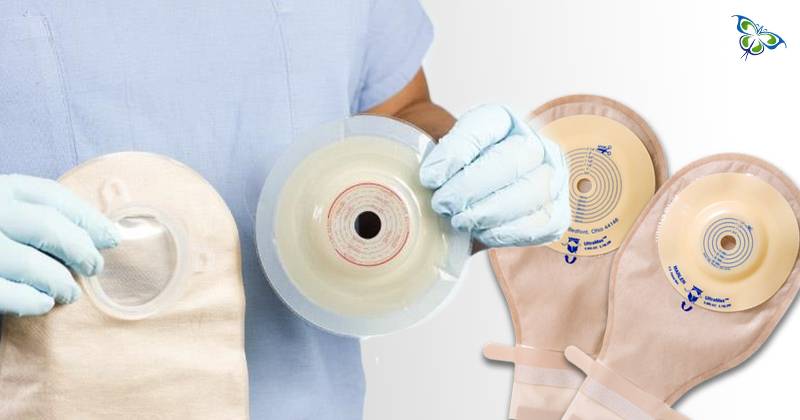
Hello
Select Address

The use of two-piece pouches is popular among ostomy patients. Since pouches (either two-piece or one-piece) are an integral part of ostomy supplies, a basic overview of ostomy surgery is essential before getting into the discussion of the functionality and use of pouches.
In medical science, an ostomy is a process through which a change or bifurcation is in the way of urine or stool. The restructuring is done surgically, and it becomes needful especially when certain body parts or organs that are connected to the urinary or digestive system, start malfunctioning! However, an ostomy could be either temporary or permanent, depending upon the need of the patient.
Ostomy is a life-saving surgery that simply allows the body waste to pass through a surgically created stoma. The waste is made to pass into a prosthetic known as a ‘pouch’. The pouch is technically also referred to as an ‘ostomy bag’ which may remain on the outside of the body or even be an internal surgically created pouch.
Why would a patient need an ostomy at all?
The necessity for an Ostomy could arise due to one among the following conditions:
• Birth defects
• Different types of cancer, especially in the lower abdominal cancer or that in the brain.
• Urinary incontinence
• Inflammatory bowel disease
• Other medical conditions
Severe trauma in the pelvic or abdominal region that results from accidents or injuries, could also lead to the need for ostomy surgery.
A clear view of ostomy necessarily reveals that this surgery does not culminate in any lowering of life expectancy. On the contrary, it is indeed the start of a normal life. Now, what makes the pouch necessary? Technically speaking, if any alternative path could be created with the help of a suitable diversion, the need for the pouch does not actually arise.
Ostomy commonly takes place in three different types. They are namely Colostomy, Ileostomy, and Urostomy. The three types have been vividly discussed below in this piece of article.
Colostomy
A colostomy is a surgery related to the colon or large bowel. When a part of the large bowel is pulled from an incision that is made in the abdomen, it is known as Colostomy. The portion that is pulled out forms the stoma to which the pouch should be attached. Colostomy can again be of two types – End Colostomy and Loop Colostomy.
Colostomy is only a part/type of ostomy where the waste from the colon is rerouted. All types of rerouting of the body's total waste is called ostomy!
What is Ileostomy?
In simple terms, ileostomy involves the surgical creation of an opening in the abdominal wall to which a portion of the ileum (lowest part of the small intestine) is pulled, thus creating a stoma. The external pouching system is attached over here into which the digested food passes down.
Finally, what is Urostomy?
In cases where the urinary bladder is removed, (especially bladder cancer patients), the ureters need to be detached from the bladder. In this surgical intervention, an opening is created in the abdominal wall through the belly. The bladder is either or removed from within the body. Since the stoma does not have any nerve ending, no sensation of pain or discomfort exists. Consequently, the patient does not have any control over the flow of urine. The ostomy pouch is in this instance inevitable.
Pouching systems for ostomy surgeries
Pouching systems used in ostomy cases are prosthetic devices that are used to collect bodily waste. The waste moves down a biological system that is basically a diversion created with the help of the surgical intervention in the colon, ileum or bladder.
The system ordinarily consists of a plastic bag that is attached to the patient’s body with the help of an adhesive. The adhesive barrier that sticks to the skin is called a flange, skin barrier, or wafer.
Pouching systems are primarily of 2 types: One-piece and Two-piece pouching systems. The basic difference between the two lies in the ‘skin-barrier’.
The one-piece pouching system: In the case of a one-piece pouching system, while the collection unit (or the pouch) is taken off, the skin barrier comes off too.
The two-piece pouching system: This second type has a segregate skin barrier that does not come off while the pouch is pulled out.
[Read more on: ostomy barrier ring]
Know-How on the skin barrier post an ostomy
The repeated flow of urine through the stoma might cause skin irritations of various degrees. The choosing of the right pouching system, therefore, stands crucial; depending on the design of the pouch, the hole on the abdominal wall is cut for the stoma. Ideally, the opening of the skin barrier should be at least 1/8th of an inch larger than the stoma size; this ensures keeping the urine off the skin!
The selection of pouching systems – be it a one-piece or a two-piece pouching system, often depends upon lifestyle and individual preferences. Among its important functionalities, the major one is to protect the skin from contamination. These devices are both air-tight and water-tight thus allowing the user to lead an easy and normal lifestyle that might even include sports and other fun activities!